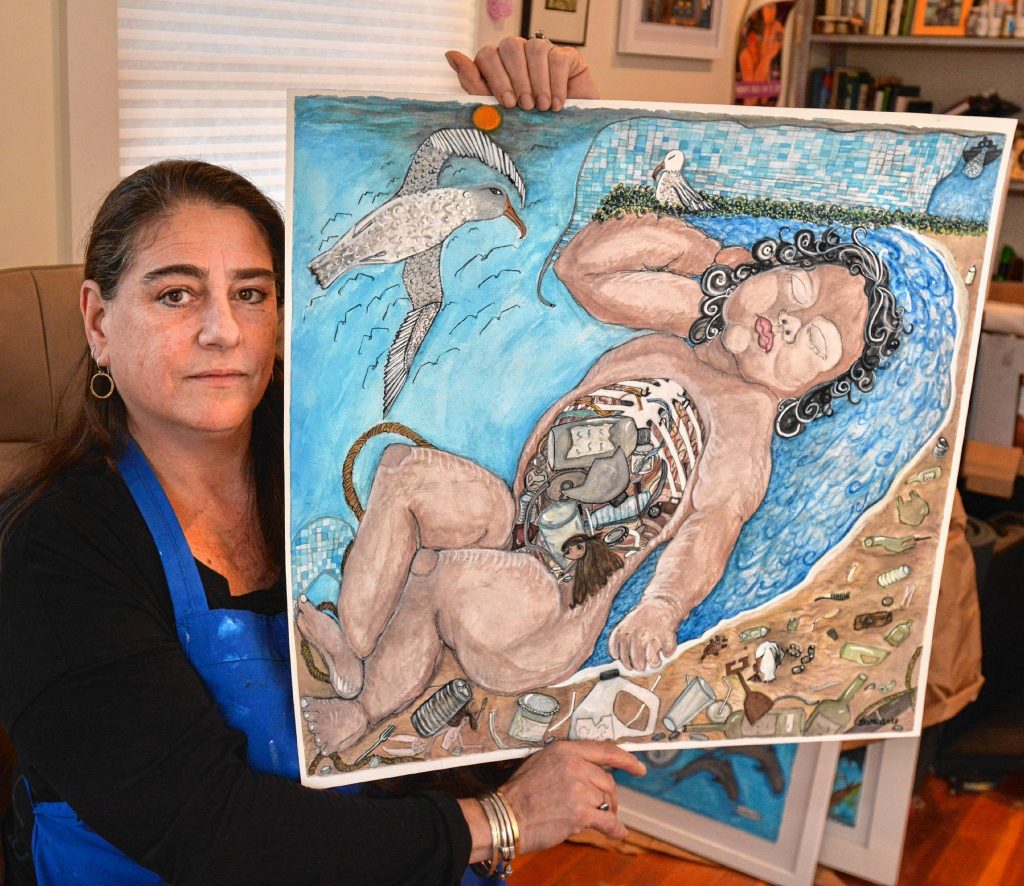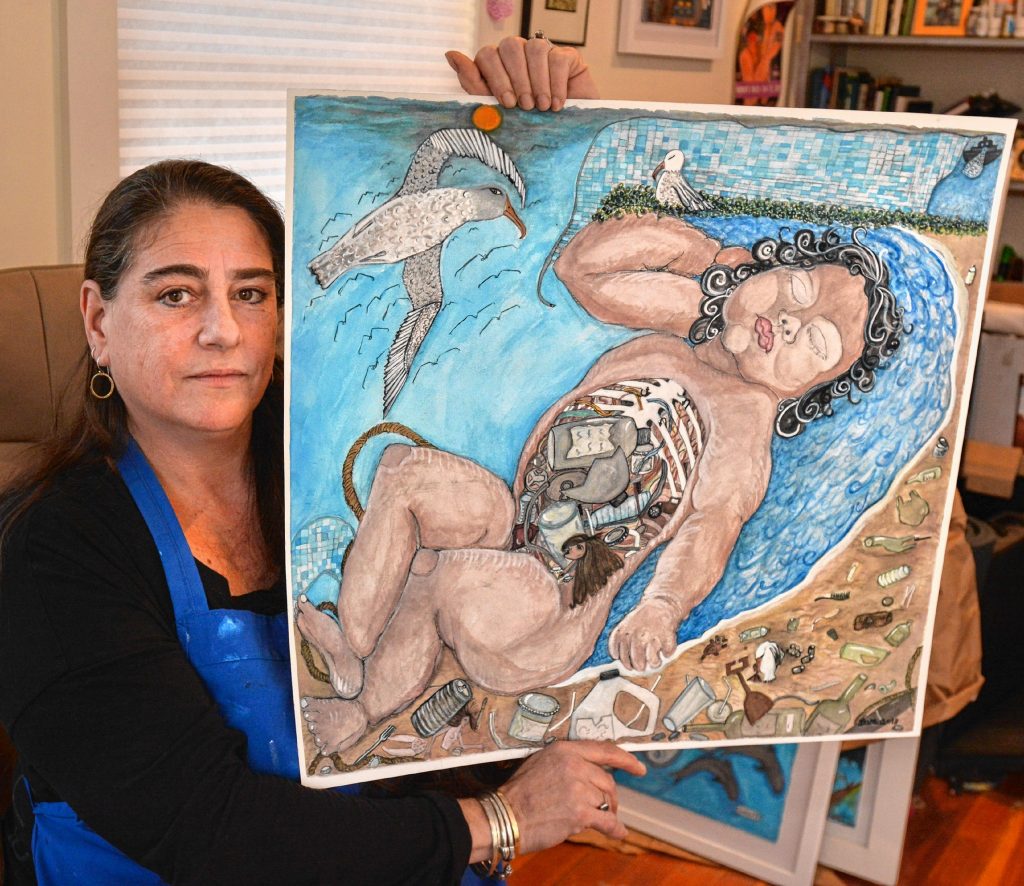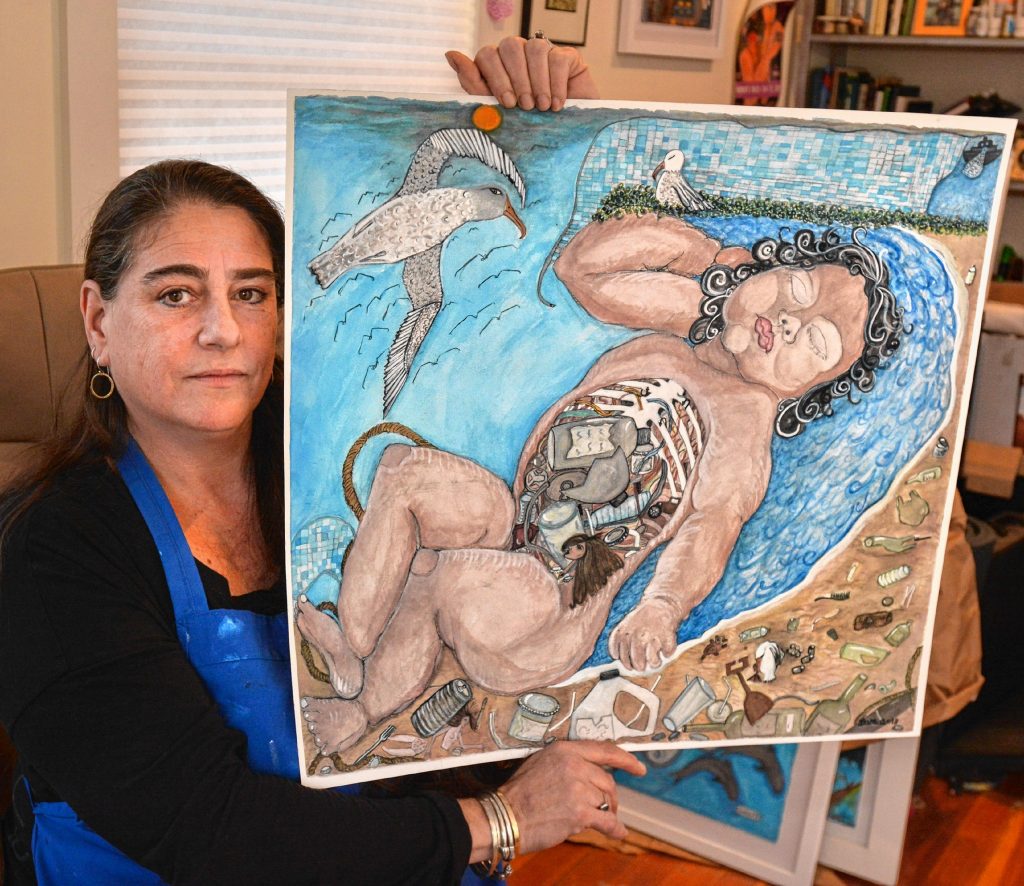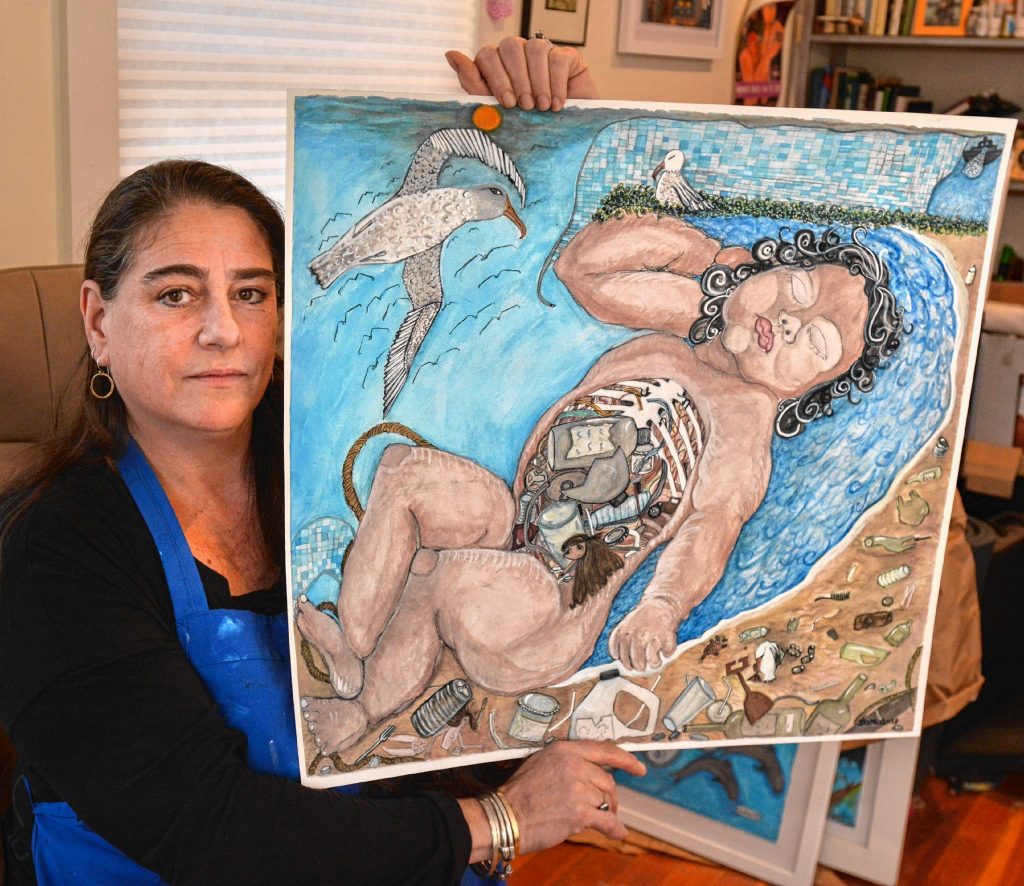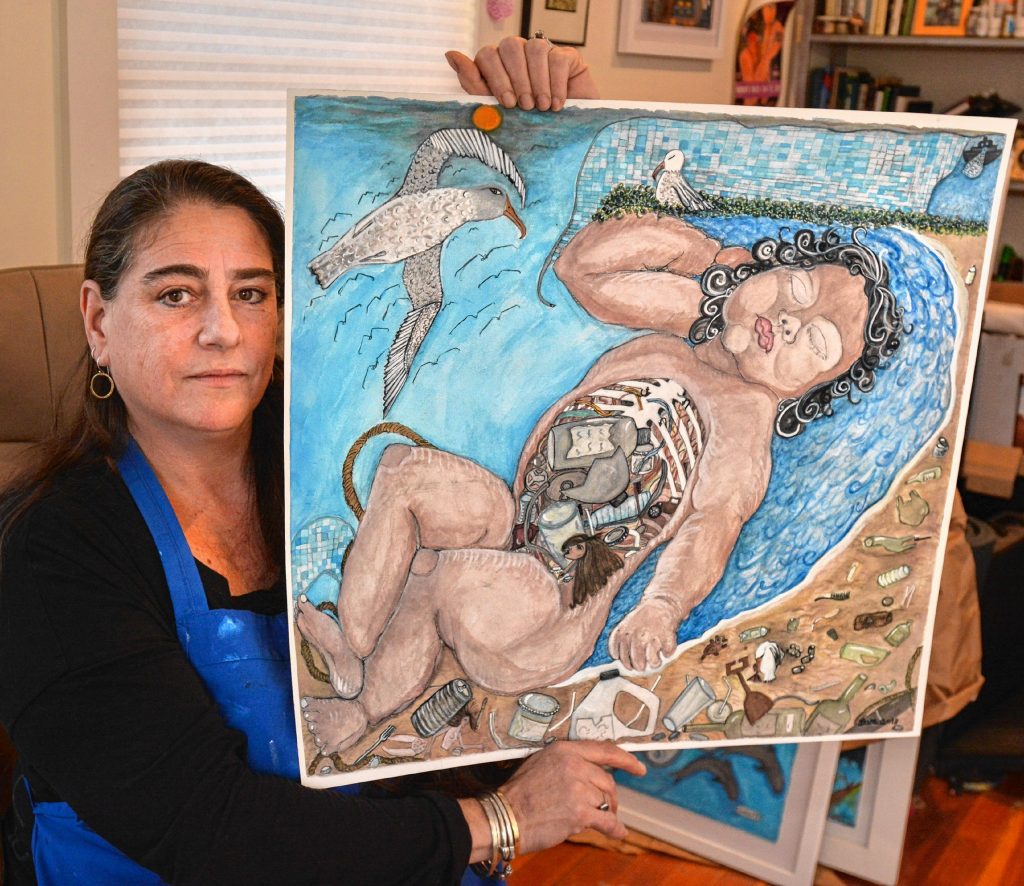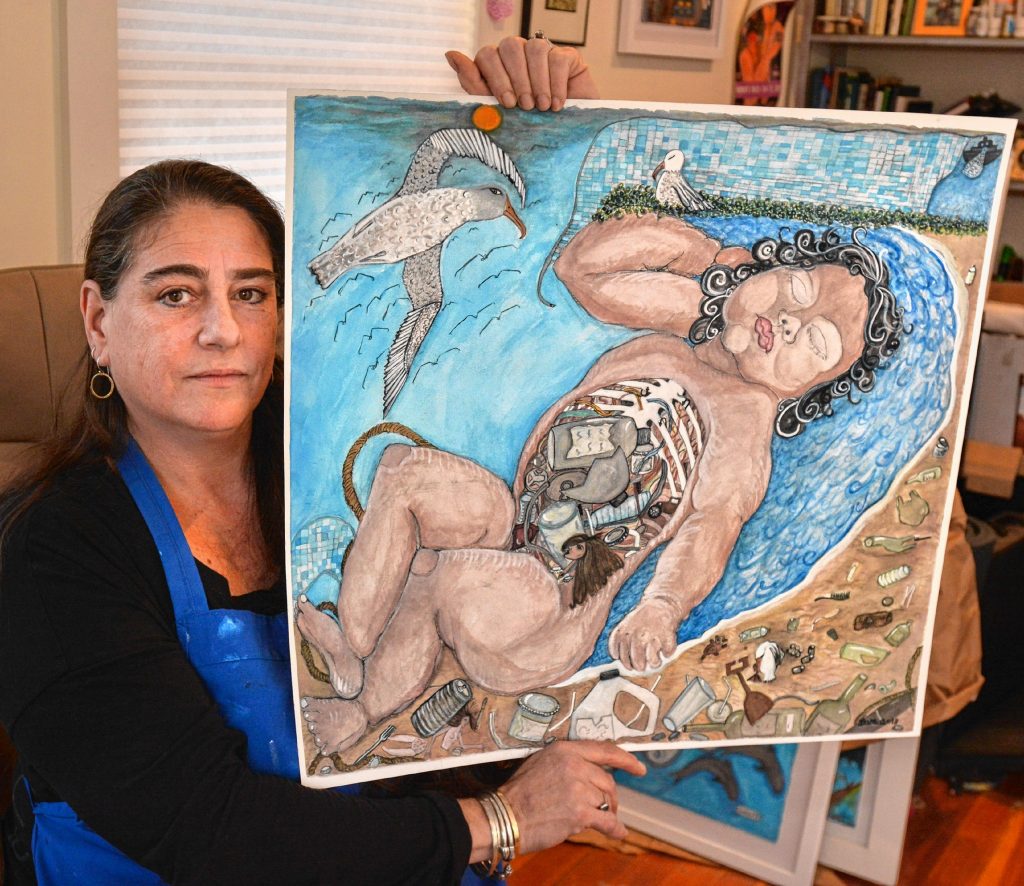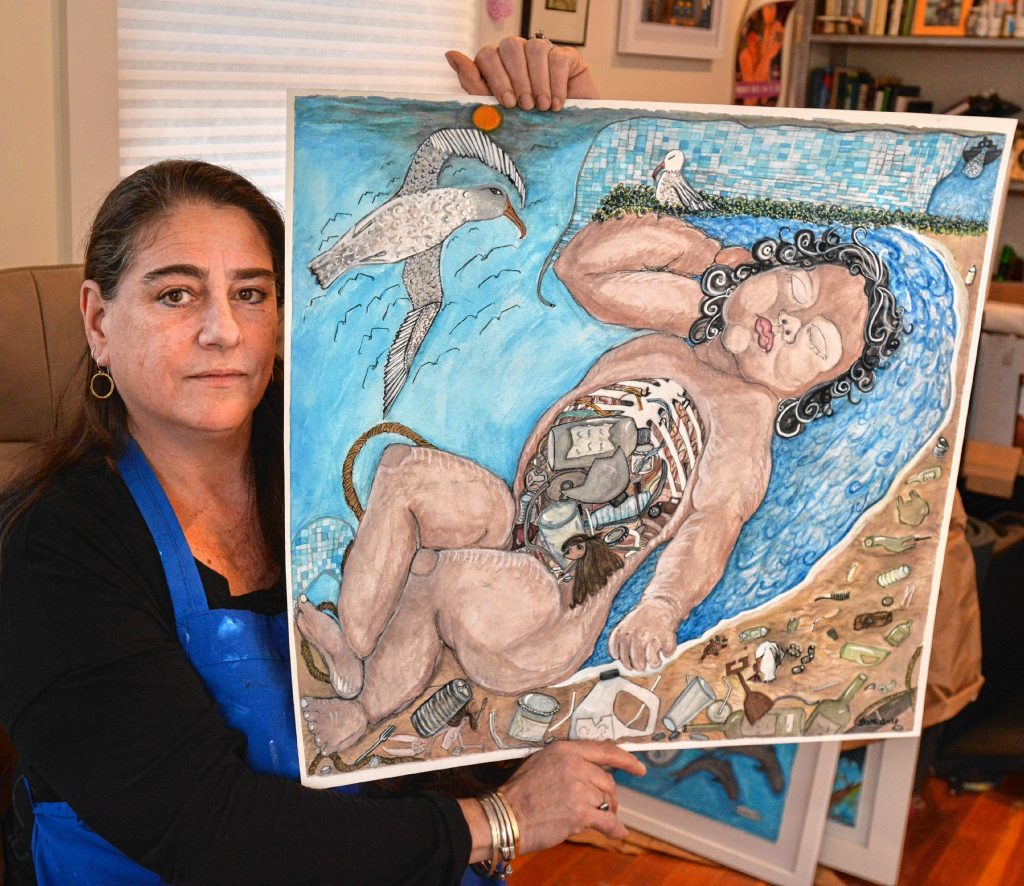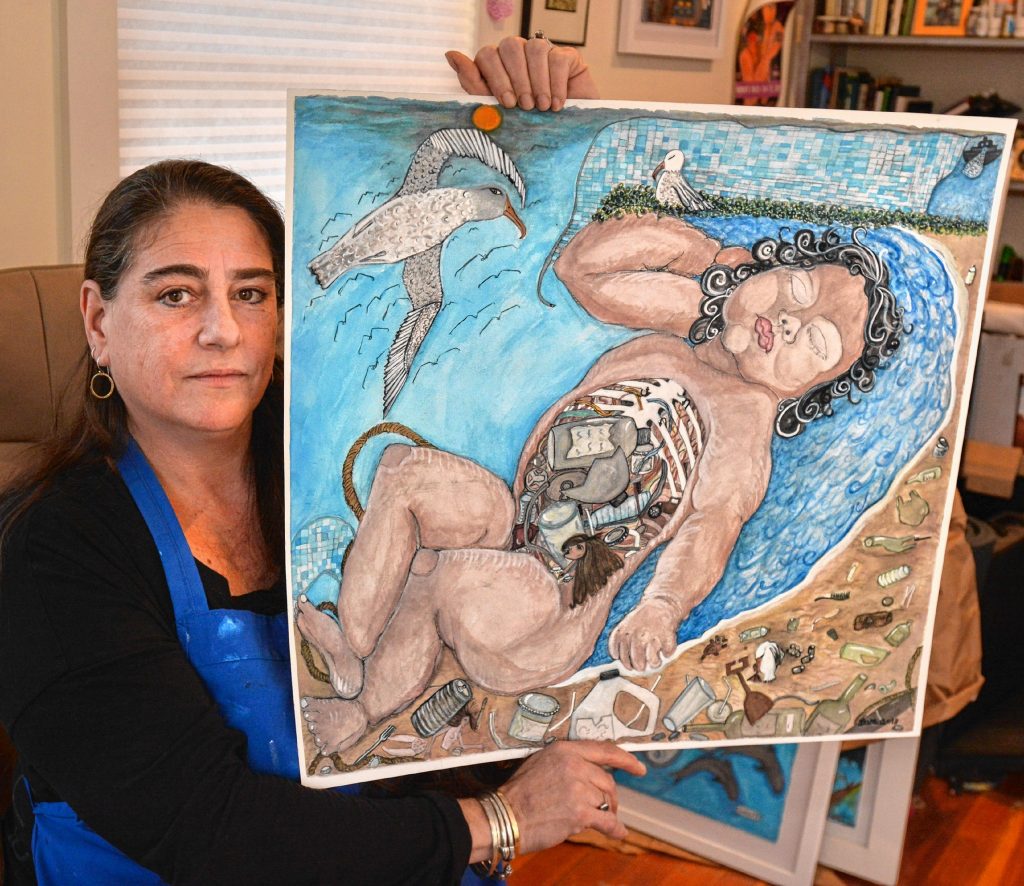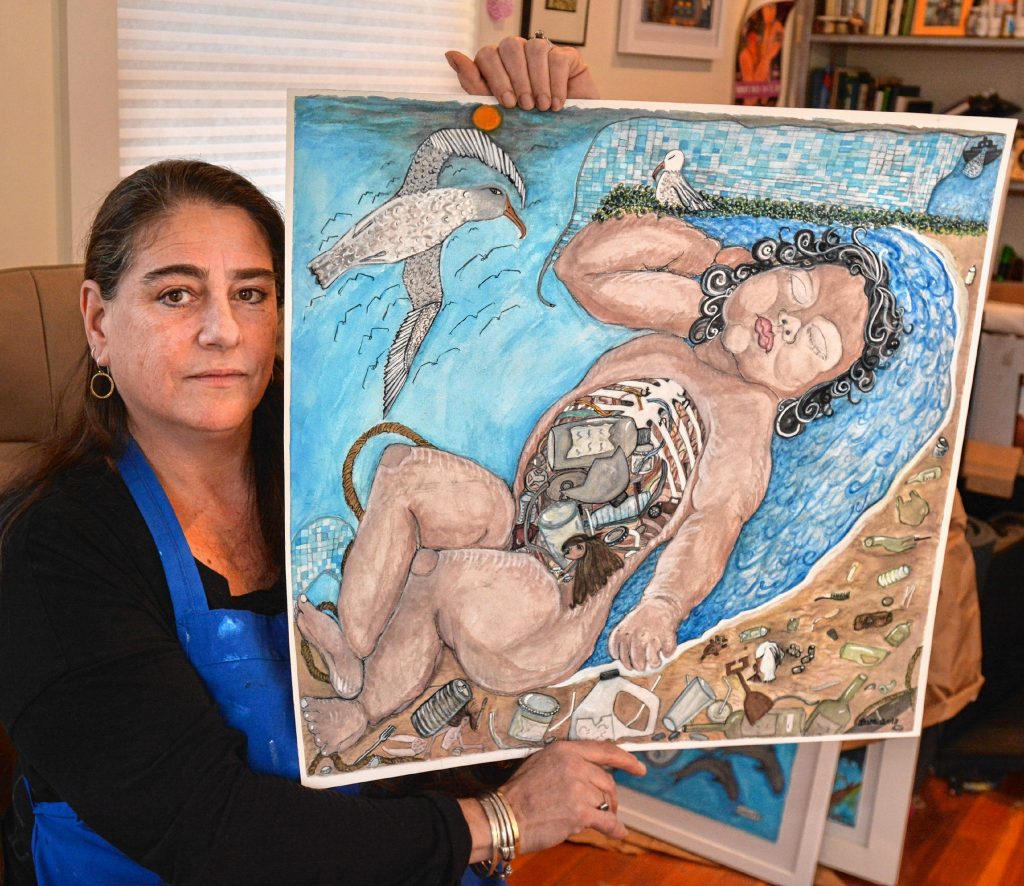Eight billion metric tons. According to Industrial Ecologist Roland Geyer of the University of California, Santa Barbara, that is the amount of plastic that has been produced since the 1950s, and almost half of that, was created after the year 2000, causing plastic pollution and its environmental impacts to explode as well.
Many argue that it is our societal addiction to convenience and a lack of forward thinking that has allowed unbridled plastic production and usage to become a toxic and ubiquitous part of our lives. One Northampton resident is on a mission to change this trend.
“Awareness and education is everything,” artist, educator, illustrator and author Dara Herman Zierlein says. “I try to educate people on the effects of plastic pollution and the steps they can take to reduce their personal use of plastic.”
Zierlein uses her art as a medium to raise awareness about the harmful effects of plastic pollution. She provides lectures on the subject, is working on creating educational community events, and together with her husband illustrator Peter Zierlein, has just written a children’s book entitled “Don’t Eat the Plastic” which will be released in September.
Watch Zierlein on the Valley Advocate Podcast.
For Zierlein the fight against unnecessary plastic use began with examining her own reliance on plastic bottles.
Once an avid runner in New York City, Zierlein consumed a lot of water, all of which was supplied in plastic bottles and jugs. Annoyed with the way these containers quickly piled up in her recycling bins, she began to question the common practice of single use plastic bottles, researching the impact of plastic pollution and recycling.
“Once I started educating myself I said, ‘This has got to stop; I’m done I can’t do this anymore,’” she said. “The more I learned the more I changed my lifestyle.”
Geyer says less than one fifth of all plastic is recycled globally. While Europe has the highest recycling rates at 30 percent, the United States lags behind, recycling just nine percent of its plastic trash.
What isn’t recycled ends up in land fills, creates terrestrial pollution, or makes its way into lakes, rivers, streams, and oceans wrecking havoc on global marine life through entanglements, ingestion and chemical contamination.
According to the Ocean Conservancy, plastic pollution reaches every level of life in the ocean from zooplankton and fish, to sea turtles, marine mammals and seabirds.
When consumed by fish, researchers say that some of the chemical-laden microplastics can work their way up the food chain and into the fish we eat.
After Zierlein began eliminating plastic bottles from her life, she said it produced something of a chain reaction, and she started noticing all of the other plastic items that are part of our everyday existence.
“I used to have a drawer full of plastic bags, it was like its own landfill right in my home,” she said.
From bottles and shopping bags to kitchen and take out containers, ziplock bags, to-go cups, packaging materials, utensils and personal care items, the prevalence of single use plastic items became abundantly clear to Zierlein and she knew she had to do something.
“It started with me, then I began enforcing no plastic rules in my family, now I try to talk with anyone who has a conversation with me, everything I do is about trying to get plastic out of life.”
Zierlein is the first to admit that totally purging plastics from your existence is likely impossible, and thinking about doing so can make the problem feel too overwhelming. She said that by taking small bites at a big problem, we can make a substantial difference.
“People tell me all the time that they really want to get rid of plastic stuff but they don’t know how,” she said. “I say just start by making one small change, eliminate one item.”
Not purchasing water in plastic bottles and carrying your own stainless container is one easy step, another might be skipping the plastic zip lock bag for packing your kids lunches and using paper or reusable waxed cloth for wrapping food.
“Its simple steps and really, these are things you just don’t need. “I mean you don’t need a plastic bag for a sandwich unless you are having lunch on a boat!” she joked.
It comes down to making conscious choices and replacing habits of current societal “norms” and convenience, with habits of intent.
For her part, Zierlein makes a practice of carrying cloth bags in her car for groceries and supplies, bringing her own containers to restaurants for leftovers, carrying bamboo utensils so as not to use plastic, packing lunches in paper, using creams and soaps that are not in plastic bottles and avoiding items that come wrapped in plastic.
“You can’t be 100 percent all of the time or it will drive you insane, so make your informed choices and do the best you can,” she said. “I would die of dehydration before ever drinking out of a plastic water bottle but once in a great while I may order Chinese food and it comes in plastic.”
Taking personal responsibility for one’s individual use of plastic is a great step but other steps can include holding both big companies and small businesses accountable for their use of plastics and helping them to be aware of the dangers of plastic pollution and alternatives that might be available to them.
“One problem is that there are a lot of mixed messages out there — like buying organically grown food is good for you and good for the planet, but then we get it packaged in plastic, and that’s just wrong.”
As another example, Zierlein pointed to the sale of marijuana in plastic bottles. She said she completely supports it’s legal sale, but says the industry is not thinking environmentally, “and they should be.”
“We fought so hard to get a plastic bag ban in Northampton, and now we have 3,000 people coming out of a new business in our town with these little plastic bottles,” she said. “This makes me very unhappy.”
Zierlein acknowledges that plastic has its place in some applications, particularly the medical field with things like surgical gloves, tubing, blood bags, prosthetics and other items.
“We know that we need plastic for certain things and that plastic has saved lives,” she said. “But that is where I think plastic use should stay.”
While the planet’s plastic problem remains an environmental emergency, Zierlein said the number of people she sees taking positive steps to reduce plastic use on a daily basis is heartening.
“There are also companies that are now promising to eliminate plastic by 2020 and that is exciting to see that going on,” she said.
Once her book is published, Zierlein says she is hoping to be able to put together a local festival to raise awareness on plastics and how to reduce our dependence on them.
“It is hard to pull something together like this on your own, and I would look forward to working with other people who are also dedicated to this cause, ” she said.
Fran Ryan is a freelance writer living in Easthampton.
A few alternatives to plastics
- Bamboo toothbrush
- Bar soap and bar shampoo
- All metal, non-disposable razors
- Wooden combs and brushes
- Stainless steel straws
- Stainless steel drinking bottles
- Cloth shopping bags
- Washable mesh produce bags
- Cloth or stainless lunch containers
- Glass, stainless or silicone food storage containers
- Reusable wax cloth food wraps
- Plant based utensils
- Silicone ice trays
- Cloth, bamboo, or hemp shower curtains
- Wooden hangers
- Bamboo drawer organizers
- Hemp, bamboo, or natural rubber yoga mats
- Biodegradable trash and pet waste bags
- Buying foods in bulk
- Buying fresh produce
- Buying meats from the butcher wrapped in paper

